|
|
|
Книги издательства «Oxford University Press»

|
A two-level course that allows language to emerge naturally through songs, pictures, stories, and activities. — It creates a lively classroom atmosphere that encourages children to participate actively in every lesson. — The action centres around the adventures of an appealing group of children, their imaginary friend, their teddy, and their dog. The themes are central to children's lives and stimulate their imaginations. — New language is presented through chants, songs, pictures, and stories. There are no words in the Class Book, so children can concentrate on developing listening skills by linking the illustrations with what they hear. — A range of activities — drawing, craft work, games, and music — caters for different teaching techniques and situations while keeping young learners interested and involved. — Each unit has a story in the accompanying Story Book. The children follow the pictures and listen either to the teacher or the cassette in an enjoyable whole-class activity. The children have the pleasure of a shared experience, and the teacher is able to keep the ending a surprise. — The humorous, colourful illustrations maintain a high level of motivation. |
|
A flexible set of materials to introduce pre-school children to English |

|
A unique insight into British life and culture. — Both videos in this series contain eight factual reports, introduced by a presenter. Window on Britain topics are: An introduction to Britain, Schools, Food, Home, Sport, Festivals, Pop, and London. — Window On Britain 2 topics are: Work, Animals, Holidays, The Media, Leisure, The Environment, Health, and Law and Order. — The reports combine factual information with some semi-dramatized scenes. — At each level the video is supported by an Activity Book for students and a Video Guide for teachers. |

|
A unique insight into British life and culture. — Both videos in this series contain eight factual reports, introduced by a presenter. — Window on Britain topics are: An introduction to Britain, Schools, Food, Home, Sport, Festivals, Pop, and London. — Window On Britain 2 topics are: Work, Animals, Holidays, The Media, Leisure, The Environment, Health, and Law and Order. — The reports combine factual information with some semi-dramatized scenes. — At each level the video is supported by an Activity Book for students and a Video Guide for teachers. — There is also a Window on Britain CD-ROM containing all the material in both the video and the support material, plus other features for classroom and individual use. |

|
A series of Workbooks offering practical English lessons for school students preparing for work. |
|
A series of Workbooks offering practical English lessons for school students preparing for work. |
|
A three-level course reflecting the interests of young teenagers. — WOW! takes the form of a lively (fictitious) TV programme for young people which is itself called WOW!, or Window on the World. It appeals directly to young teenage learners by following the familiar conventions and genres of youth TV: quizzes, travel reports, documentary features, interviews and cartoons across a range of lively and often exciting topics. — It has a clear structural syllabus which provides students with a systematic and thorough foundation in grammar, from the simple present to the third conditional. Grammar points are clearly identified, explained, and practised through the imaginative contexts provided by the television programme format. — Everyday functional English is taught through regular, humorous cartoon sketches. Controlled development of all four language skills, pronunciation, and vocabulary are also systematically covered throughout the three levels. — Each level provides 90-120 hours of work and consists of twenty units divided into three parts. The first two parts present and practise new structures and functions, and the third part recycles the new language (through an exciting serial story in level 1, and through integrated skills development in levels 2 and 3). — Every second unit is followed by a revision and extension section which recycles and develops the grammar, vocabulary, and skills that have been covered in the units. — Supplementary Grammar and Practice Books at each level provide further explanations and practice of the grammar syllabus. The exercises are easy for the student to understand and can be done as homework or revision without the teacher's guidance. |

|
A three-level course reflecting the interests of young teenagers. — WOW! takes the form of a lively (fictitious) TV programme for young people which is itself called WOW!, or Window on the World. It appeals directly to young teenage learners by following the familiar conventions and genres of youth TV: quizzes, travel reports, documentary features, interviews and cartoons across a range of lively and often exciting topics. — It has a clear structural syllabus which provides students with a systematic and thorough foundation in grammar, from the simple present to the third conditional. Grammar points are clearly identified, explained, and practised through the imaginative contexts provided by the television programme format. — Everyday functional English is taught through regular, humorous cartoon sketches. Controlled development of all four language skills, pronunciation, and vocabulary are also systematically covered throughout the three levels. — Each level provides 90-120 hours of work and consists of twenty units divided into three parts. The first two parts present and practise new structures and functions, and the third part recycles the new language (through an exciting serial story in level 1, and through integrated skills development in levels 2 and 3). — Every second unit is followed by a revision and extension section which recycles and develops the grammar, vocabulary, and skills that have been covered in the units. — Supplementary Grammar and Practice Books at each level provide further explanations and practice of the grammar syllabus. The exercises are easy for the student to understand and can be done as homework or revision without the teacher's guidance. |

|
A three-level course reflecting the interests of young teenagers. — WOW! takes the form of a lively (fictitious) TV programme for young people which is itself called WOW!, or Window on the World. It appeals directly to young teenage learners by following the familiar conventions and genres of youth TV: quizzes, travel reports, documentary features, interviews and cartoons across a range of lively and often exciting topics. — It has a clear structural syllabus which provides students with a systematic and thorough foundation in grammar, from the simple present to the third conditional. Grammar points are clearly identified, explained, and practised through the imaginative contexts provided by the television programme format. — Everyday functional English is taught through regular, humorous cartoon sketches. Controlled development of all four language skills, pronunciation, and vocabulary are also systematically covered throughout the three levels. — Each level provides 90-120 hours of work and consists of twenty units divided into three parts. The first two parts present and practise new structures and functions, and the third part recycles the new language (through an exciting serial story in level 1, and through integrated skills development in levels 2 and 3). — Every second unit is followed by a revision and extension section which recycles and develops the grammar, vocabulary, and skills that have been covered in the units. — Supplementary Grammar and Practice Books at each level provide further explanations and practice of the grammar syllabus. The exercises are easy for the student to understand and can be done as homework or revision without the teacher's guidance. |

|
A three-level course reflecting the interests of young teenagers. — WOW! takes the form of a lively (fictitious) TV programme for young people which is itself called WOW!, or Window on the World. It appeals directly to young teenage learners by following the familiar conventions and genres of youth TV: quizzes, travel reports, documentary features, interviews and cartoons across a range of lively and often exciting topics. — It has a clear structural syllabus which provides students with a systematic and thorough foundation in grammar, from the simple present to the third conditional. Grammar points are clearly identified, explained, and practised through the imaginative contexts provided by the television programme format. — Everyday functional English is taught through regular, humorous cartoon sketches. Controlled development of all four language skills, pronunciation, and vocabulary are also systematically covered throughout the three levels. — Each level provides 90-120 hours of work and consists of twenty units divided into three parts. The first two parts present and practise new structures and functions, and the third part recycles the new language (through an exciting serial story in level 1, and through integrated skills development in levels 2 and 3). — Every second unit is followed by a revision and extension section which recycles and develops the grammar, vocabulary, and skills that have been covered in the units. — Supplementary Grammar and Practice Books at each level provide further explanations and practice of the grammar syllabus. The exercises are easy for the student to understand and can be done as homework or revision without the teacher's guidance |

|
An excellent grounding in all four language skills. — The course is built on a clear structural syllabus, providing young children with a solid foundation in all four language skills and the confidence to communicate effectively. — Vocabulary and structures are presented at a pace young children can follow and are continuously recycled and revised, ensuring steady progress. — Language is presented and practised through varied and enjoyable activities, including songs, games, and a delightful storyline featuring the adventures of a group of children, clowns, and a monkey. — A 'You and Me' section in every unit allows children to personalize their learning by talking about themselves and doing very simple project work. — Attractive illustrations, photographs, and a large sheet of colourful activity stickers all help to keep motivation high. — The optional Starter Book is an ideal foundation book for learners unfamiliar with the Roman alphabet. |

|
A topic-based four-level primary course with an emphasis on developing reading and writing skills. — Characters such as Zabadoo the genie, Bob the fish, and the mad inventors, Gizmo and Hoot, present classroom language, help with reading in English, and practise grammar in a way that makes sense to children. — At the end of each unit, children work on a short project. — 'Time for Fun' revision sections remind children what they have learned and help them prepare for the tests. — In levels 1 and 2 life in Britain is presented through 'Will's website', so that learners can compare British life with their own country. — Each level includes a Christmas play, and a play based on a traditional tale — Little Red Riding Hood, The Pied Piper of Hamelin, and Rumpelstiltskin. — Zabadoo! Plus helps children adapt to the more formal approach of a secondary course. |

|
A topic-based four-level primary course with an emphasis on developing reading and writing skills. — Characters such as Zabadoo the genie, Bob the fish, and the mad inventors, Gizmo and Hoot, present classroom language, help with reading in English, and practise grammar in a way that makes sense to children. — At the end of each unit, children work on a short project. — 'Time for Fun' revision sections remind children what they have learned and help them prepare for the tests. — In levels 1 and 2 life in Britain is presented through 'Will's website', so that learners can compare British life with their own country. — Each level includes a Christmas play, and a play based on a traditional tale — Little Red Riding Hood, The Pied Piper of Hamelin, and Rumpelstiltskin. — Zabadoo! Plus helps children adapt to the more formal approach of a secondary course. |
|
A fully revised and updated edition of this popular low-level course. — A topic-centred course that covers key computing functions and develops learners' competence in all four skills. — Graded specialist content combined with key grammar, functional language, and subject-specific lexis. — Simple, authentic texts and diagrams present up-to-date computing content in an accessible way. — Tasks encourage learners to combine their subject knowledge with their growing knowledge of English. — Glossary of current computing terms, abbreviations, and symbols. — Teacher's Book provides full support for the non-specialist, with background information on computing content, and answer key. |
|
- This series of three books provides practice tests for the revised Business English Certificate exams at Preliminary, Vantage and Higher levels. — The exams are available in 60 countries worldwide, and reflect the ALTE (Association of Language Testers in Europe) level system. They cover the four language skills of Reading, Writing, Listening and Speaking, and with the revisions now incorporate certain features of the CEIBT exams, and reflect developments in other exams such as PET, FCE and CAE. — Each book contains four complete Practice Tests. Two editions are available, with or without answers. The With Answers editions include sample written answers which are assessed in detail, with errors corrected, good points highlighted, and marks given. |

|
A three-level course for pre-teenage students which bridges the gap between primary and secondary learning styles. — It is designed for students beginning English from the age of nine, and directly addresses the changing skills and interests of students as they approach adolescence. — It provides a communicative approach to learning, supported by a well-structured grammar syllabus. Level 1 gives students a solid introduction to the basics of English grammar. In levels 2 and 3 the grammar syllabus helps students analyse language and master more complex structures. There is a grammar summary at the back of each Student's Book. — The three levels of the course reflect a steady increase not only in language level but also in cognitive maturity. In level 1 new language is presented through a colourful fantasy cartoon. In levels 2 and 3, this is replaced with a more appropriate focus on topics from the real world. — A special focus on vocabulary helps students to develop strategies for vocabulary acquisition and coping with unknown words. — Simple rubrics and a clear lay-out make the course easy to teach and easy to follow. — The 'Think about it!' sections at the end of each unit encourage students to reflect on what they have learned and promote learner autonomy. |
|
Designed for learners who want to make effective progress in a short time, this course concentrates on developing fluency, refreshing key grammar areas, and extending vocabulary. 40-60 hours per level. • Practical syllabus includes pronunciation and lots of oral practice, as well as memory skills and timed activities to encourage fast, relevant learning. • Introduces work on features of spoken English, conversational tactics, and high frequency idiomatic vocabulary. • Clear objectives in each lesson encourage achievement and progress. • Short lessons can be used in any order, allowing choice in topic and syllabus coverage. • All-in-one Classbook, with Practice section and writing activities. • Photocopiable Teacher's Resource Pack at each level for supplementing and adapting. |

|
A four-part series designed to meet the needs of secondary students continuing English as well as those starting English for the first time. • Dream Team is a communicative course that teaches students how to use language in real situations, while also paying careful attention to grammar, vocabulary, and pronunciation. • Strong emphasis is placed on the clear and thorough presentation of grammar points, followed up by systematic practice throughout the course. • Plenty of practice is given from the start in reading, writing, listening, and speaking, training students to communicate fluently and effectively in English. • Stimulating and engaging topics, and an amusing and lively presentation story involving the activities of teenagers, appeal directly to the age group. • There is a solid built-in process of revision and consolidation, which trains students to review what they have learnt regularly and systematically, and helps them prepare for tests. • The course offers a range of flexible options to help teachers meet the needs of their particular teaching situation. These include an optional introductory section, an optional final 'Bonus unit' and optional projects and stories. |
|
This new series of video-based courses is aimed at professional people who need to improve their language and communication skills in specific business areas. Each course takes a common business function such as giving a presentation or participating in a meeting, and takes learners through a stage-by-stage analysis of the skills and language they need to perform these functions effectively in English. |

|
This new series of video-based courses is aimed at professional people who need to improve their language and communication skills in specific business areas. Each course takes a common business function such as giving a presentation or participating in a meeting, and takes learners through a stage-by-stage analysis of the skills and language they need to perform these functions effectively in English. |
|